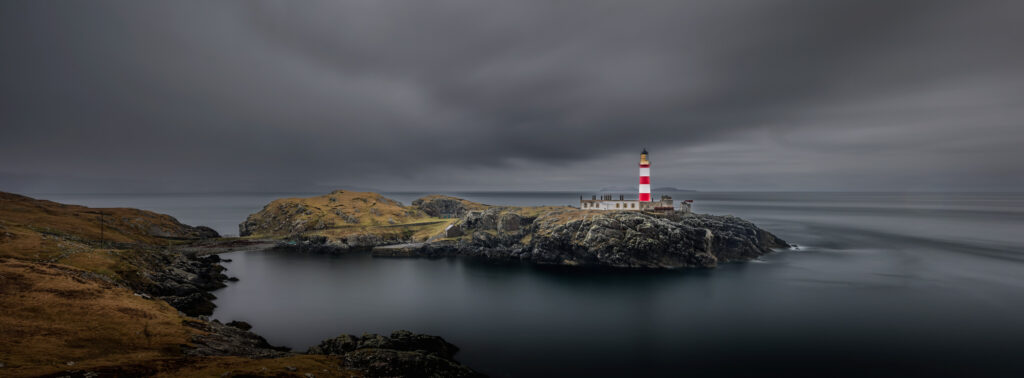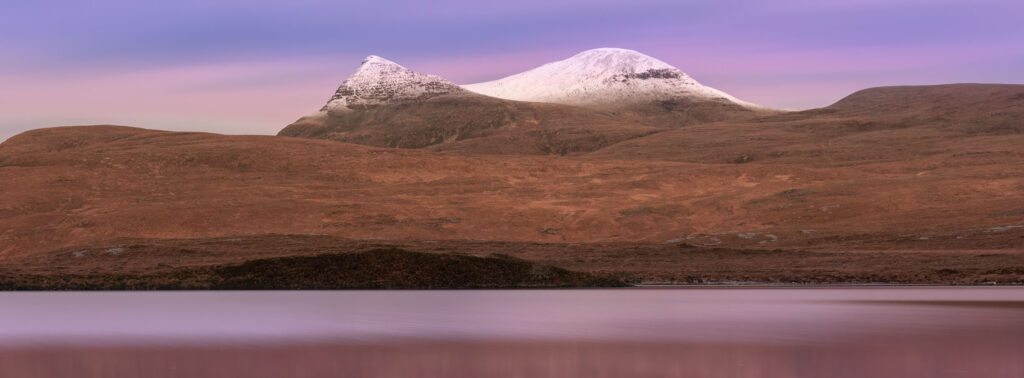Is It Worth It...
The Reality of Pursuing Landscape Photography as a Full-Time Career…
Landscape photography is often seen as a dream career, where one spends their days capturing beautiful scenes in nature. However, the truth is far from this romanticised vision. The market for landscape photography has become increasingly difficult, saturated with talented individuals, and traditional income streams like stock photography and print sales are in decline. If you’re considering turning your passion for landscape photography into a full-time career, it’s essential to understand the many challenges that come with this decision.

A Saturated Market…
The most significant challenge for aspiring full-time landscape photographers is the overwhelming saturation of the market. With high-quality cameras becoming more affordable and editing software more accessible, almost anyone can create stunning landscape images. Social media platforms like Facebook, Instagram, X and YouTube have further contributed to this by giving countless photographers a platform to share their work.
This democratization of photography means you’re competing against thousands of skilled individuals, many of whom are working hard to build a following and make a name for themselves. Simply having talent is no longer enough to stand out. You must have a unique perspective or style to differentiate yourself from the crowd.

The Decline of Stock Photography…
Stock photography used to be a reliable way for photographers to earn money. Businesses, websites, and marketing agencies needed quality images, and photographers could sell their work through stock photography platforms. However, the rise of free stock websites like Unsplash and Pexels has changed this landscape. Companies and individuals can now access high-quality images for free, reducing the demand for paid stock photos.
The result is a flooded stock photography market, where even highly skilled photographers struggle to make significant income. In most cases, stock photography is no longer a viable way to support a full-time career in landscape photography.

The Rise of Artificial Intelligence…
The rise of artificial intelligence (AI) presents both opportunities and challenges across various industries, and landscape photography is no exception. While AI has the potential to enhance the creative process, it also poses a significant threat to traditional landscape photography.
One of the primary concerns is the increasing sophistication of AI-generated images. Through advancements in neural networks and machine learning, AI can now produce hyper-realistic landscapes that are almost indistinguishable from photographs taken by professional photographers. These AI-generated images can be created without the need for travel, equipment, or ideal weather conditions, providing a cost-effective and time-efficient alternative to traditional landscape photography. This technology undermines the value of photographers who invest significant time and resources into capturing natural landscapes.
Another major concern is the potential for AI to disrupt the authenticity of landscape photography. The art of landscape photography is rooted in capturing the natural world as it is, with all its imperfections and nuances. AI, on the other hand, can generate perfect landscapes that do not exist in reality, blurring the lines between authentic and artificial imagery. As AI-generated landscapes become more prevalent, there is a risk that the appreciation for the real world’s raw beauty may diminish.
While AI offers exciting possibilities in image creation and editing, it also poses a serious threat to traditional landscape photography by potentially devaluing the work of professional photographers and altering the perception of natural beauty.

Shrinking Print Sales…
Selling prints of beautiful landscape images may seem like an attractive revenue stream, but this market is also shrinking. Fewer people are buying physical prints for their homes or offices, and those who do are often overwhelmed with choices. While there is still a niche market for high-quality prints, the competition is fierce, and the costs of printing, framing, and shipping can cut into already slim profits.
Print sales, once a cornerstone of many landscape photographers’ incomes, can no longer be relied upon as a primary revenue source. This decline means photographers must find other ways to sustain their business.
A critical lesson I have learned is that photography and business have a symbiotic relationship rather than being mutually exclusive. The business aspect supplies the foundation and resources to showcase my work, while the artistic component appeals to clients and fosters business expansion. They are interconnected, forming a cycle of inspiration and sustainability.
For instance, when I capture a landscape, it not only satisfies my creative impulse but it can also become a powerful marketing tool. Disseminating these photographs through various channels, such as social media, galleries, and exhibitions aids in the development of my brand and the attraction of potential clients. Moreover, comprehending market trends and client preferences can influence my artistic direction, compelling me to seek out new styles and themes.

The Challenges of YouTube and Social Media…
As traditional revenue streams like stock photography and print sales have declined, many photographers have turned to social media and YouTube to generate income and build their brands. Early trailblazers like Thomas Heaton and Brendan van Son inspired a generation of photographers to document their journeys, teach photography, and engage with audiences through video content.
However, the landscape of social media and YouTube is now far more competitive. Success on these platforms requires not only photography skills but also proficiency in video production, editing, and social media marketing. Even with consistent effort, it can take years to build a following large enough to generate substantial income through ads, sponsorships, or sales. The effort required to grow on YouTube or Instagram is immense, and only a small fraction of photographers achieve significant success.

The Reality of Running a Photography Business…
1. It’s Not Just About Taking Photos
One of the biggest misconceptions about turning photography into a full-time career is that it’s all about being out in nature, taking pictures. In reality, running a successful photography business requires mastering a wide range of non-creative tasks. You’ll need to handle accounting, marketing, customer service, and more.
Much of your time will be spent on administrative tasks like managing finances, updating your website, and responding to client inquiries. For many photographers, this shift from creative work to business management can be frustrating and overwhelming
2. Marketing and Branding Are Essential
In today’s competitive landscape, simply being a talented photographer isn’t enough. You need to know how to market yourself effectively to build a strong personal brand. This means having an active website, engaging on social media, and developing a marketing strategy to attract clients and followers.
Building a brand takes time and effort, and it requires you to continuously create content that resonates with your audience. Successful photographers must become proficient in SEO (Search Engine Optimization), paid advertising, and social media engagement—skills that may feel foreign or daunting to many who entered the field for the love of photography.
3. Client Acquisition Is an Ongoing Challenge
Finding clients is one of the most difficult aspects of running a landscape photography business. Whether you’re working with tourism boards, brands, or individual clients, you’ll need to constantly seek out new opportunities. Networking and building relationships within the industry are essential to finding steady work.
Unlike a traditional job with a consistent paycheck, freelance photography income fluctuates, and the pressure to secure clients is always present. Building a reliable client base takes time and persistence, and it can be financially risky, especially when starting out.

Why You Should Think Twice Before Going Full-Time…
1. Creative Freedom vs. Financial Pressure
One of the biggest differences between being a hobbyist and a professional photographer is the loss of creative freedom. As a hobbyist, you can shoot whatever inspires you without worrying about marketability. But once photography becomes your main source of income, financial considerations begin to dictate your creative decisions.
This shift can take much of the joy out of photography. Instead of shooting for yourself, you’ll need to create work that appeals to clients or sells well, which can stifle creativity and lead to burnout. The financial pressure of running a business often outweighs the freedom of artistic expression that comes with being a hobbyist.
2. Late-Career Shifts Are Risky
For those considering a career change later in life, transitioning into full-time landscape photography can be especially risky. Starting over in a new industry is challenging, and in an already saturated market, it’s even harder to break through. Financial stability becomes more important as you get older, and the uncertainty of freelance photography may not align with your long-term goals.
Before making such a shift, it’s essential to weigh the risks and consider whether the potential rewards are worth the investment of time, energy, and money.
3. Do You Have a Unique Value Proposition?
If you’re determined to pursue full-time photography, you need to ask yourself whether you have something truly unique to offer. In a crowded market, standing out is essential. Whether it’s a distinctive style, a niche specialty like drone or astrophotography, or an innovative approach to storytelling, having a unique value proposition is crucial for success.
Without a clearly defined niche or brand, it will be extremely difficult to build a sustainable business in such a competitive industry.

Conclusion: A Cautious Approach…
Turning landscape photography into a full-time career is no easy feat. The market is saturated, traditional revenue streams are declining, and social media is a crowded space. Beyond taking great photos, running a photography business requires mastering a wide range of skills, from marketing and networking to client acquisition and business management.
For most hobbyists, keeping photography as a passion may be a better choice. The creative freedom and joy that come from shooting for yourself can easily be lost when financial pressures take over. Unless you have a strong business sense, a unique offering, and a clear understanding of the industry’s realities, proceeding with caution is the wisest path.
Making a living as a landscape photographer is possible, but it’s not a decision to be taken lightly. Consider the risks, challenges, and your long-term goals before committing to this demanding career path.
BUT….if you do decide to pursue this career, it can be the most rewarding experience.





